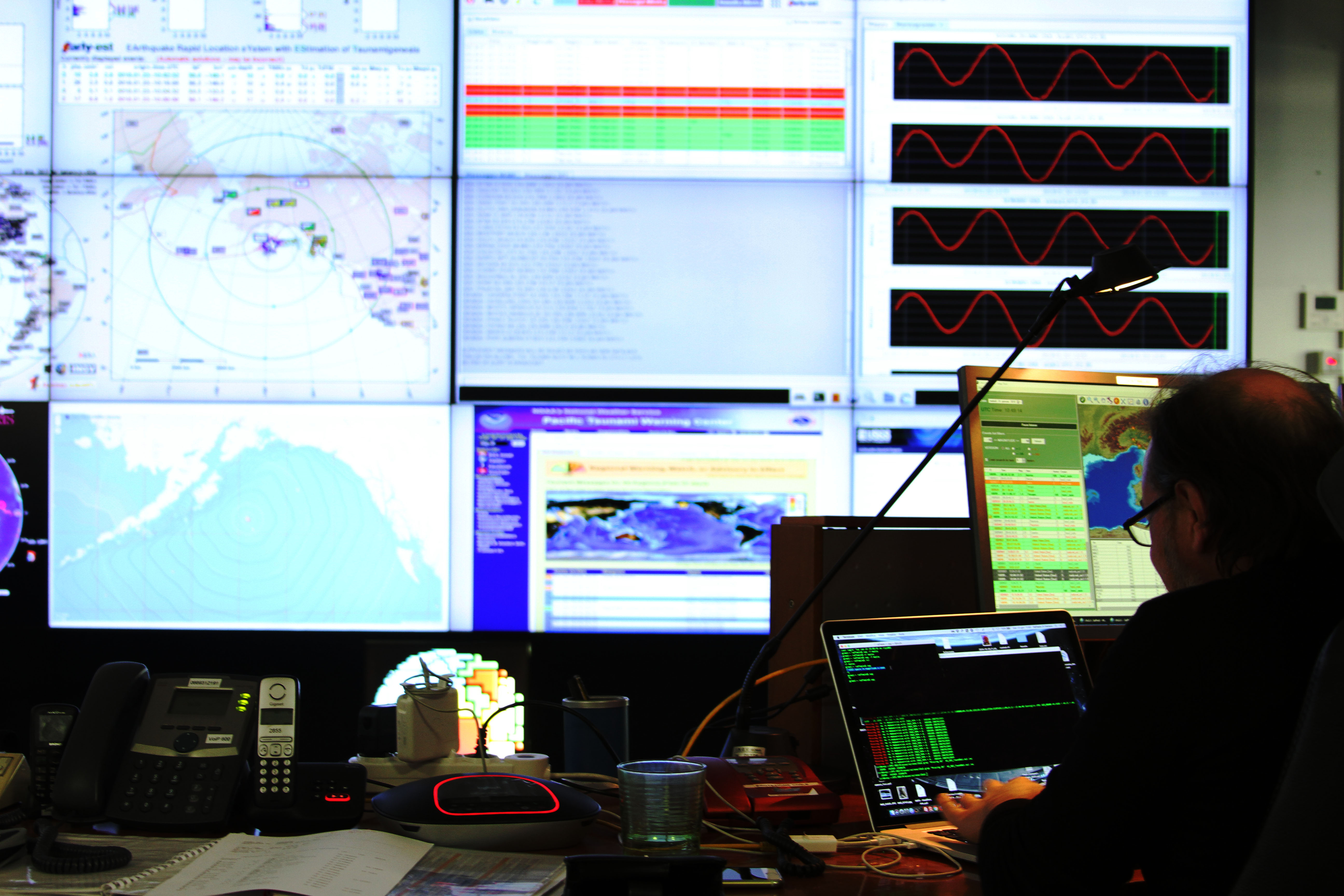 The Tsunami Alert Centre station in the seismic monitoring room of the INGV in Rome. .
The Tsunami Alert Centre station in the seismic monitoring room of the INGV in Rome. . The Tsunami Alert Centre of the National Institute of Geophysics and Volcanology (CAT - INGV) was established on 27 November 2013, with Decree No 405, signed by its President, in response to the need to provide Italy with a control system of tsunami potentially harmful to its coasts.
The activity that led to the establishment of the CAT-INGV has been lengthy. Its origin can be traced back to the devastating tsunami of Sumatra on 26 December 2004, which gave an important boost to applied research on tsunami around the world. Just a few months after this dramatic event, generated by an equally devastating earthquake (magnitude 9.3), some scholars of the INGV are part of the Italian delegation at the UNESCO meeting for the development of tsunami risk alert and mitigation systems, urgently convened in Paris in March 2005.
These include the NEAMTWS (North-Eastern Atlantic, Mediterranean and connected seas Tsunami Warning System), the international body which coordinates the surveillance and mitigation of tsunami risk over the European coasts of the North Atlantic, throughout the Mediterranean including the Black Sea and the Sea of Marmara. Italy becomes one of the pillars of NEAMTWS, both because of its experience in earthquake monitoring and because of its high exposure in the Mediterranean basin.
Thanks to many years of research, the Centre has gradually consolidated, taking on an increasingly operational role. In addition to the surveillance service, a prominent activity of the CAT, fundamental for estimating the impact, is that of evaluating the danger level of tsunamis on the Italian coasts. The first results were obtained thanks to international cooperation within the framework of the European TSUMAPS-NEAM project.
The monitoring service was activated on an experimental basis on 1 October 2014, acting as a "Tsunami Service Provider candidate" within NEAMTWS and, at national level, as a partner of the National Civil Protection Department.
During September 2016, the CAT-INGV, after two years’ testing on earthquakes and tsunamis worldwide and a rigorous verification of the technical, professional and organisational requirements imposed by the UNESCO Intergovernmental Oceanographic Commission (IOC), was accredited as a Tsunami Service Provider for the Mediterranean, together with the corresponding alert centres in France (CENALT); Greece (NOA/HL-NTWC) and Turkey (KOERI-RETMC), within the framework of the NEAMTWS.
The CAT-INGV became fully operational on 1 January 2017, as provided for in the agreement with the National Civil Protection Department (DPC). On 5 June of the same year, the Centre was formally designated - by a directive of the Prime Minister - as a component of SiAM - National Alert System for tsunami (SiAM) generated by earthquakes in the Mediterranean Sea, coordinated by the National Civil Protection Department (DPC).
In the Seismic Surveillance and Tsunami Alert Room of the CAT-INGV in Rome, a continuous monitoring of the seismic and tide gauge stations is carried out in order to assess as soon as possible whether the characteristics of a given earthquake are compatible with the generation of a tsunami, notifying any alert to the Operations Room of the DPC.
Monitoring is ensured by about forty shift workers, selected among researchers, technologists and technicians of the INGV, with the coordination of six officials. All operators are highly qualified and appropriately trained, and are certified to carry out the activities only after passing a thorough examination to verify their comprehensive knowledge of the theory, the evaluation criteria and the procedures to be adopted.
As part of its surveillance and monitoring activities, the Centre uses data from the National Seismic Network of the INGV and from the seismic stations of other international research centres, as well as data from the tide gauge network of the ISPRA and those of the tide gauge stations located on the coasts of other Mediterranean countries.



